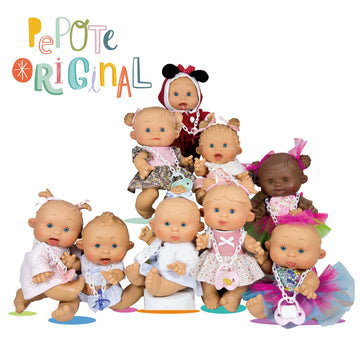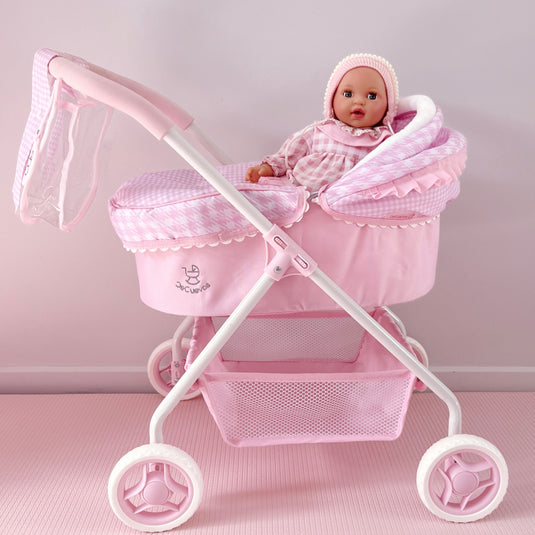The Definitive Guide for Dolls And Accessories
Table of ContentsWhat Does Dolls And Accessories Do?Unknown Facts About Dolls And Accessories3 Simple Techniques For Dolls And AccessoriesDolls And Accessories - The FactsDolls And Accessories Fundamentals ExplainedNot known Details About Dolls And Accessories Little Known Questions About Dolls And Accessories.
When dolls are consisted of in team play, children practice waiting, sharing, and paying attention to others' ideas. Whether they're acting to be a moms and dad, sibling, or buddy, kids find out just how partnerships workhow to support others, solve arguments, and take care of a person else. These very early role-play experiences end up being the groundwork for healthy relationships and partnerships later in life.Duplicating comforting regimens with a doll (feeding, rocking, closing) can aid kids feel tranquil and secure. These soothing routines teach them how to self-regulate. Looking after a doll can make a child really feel qualified and certain - dolls. It provides a sense of responsibility and control in a world that frequently feels uncertain.
Dolls And Accessories Things To Know Before You Get This
When children see dolls that reflect their race, heritage, and society, it strengthens a favorable sense of identification. Dolls additionally introduce kids to societies outside their very own, constructing respectful curiosity and compassion for others.
As Dr. Karyn Purvis, a leader in child development and trauma-informed care, as soon as claimed: This powerful quote highlights how play isn't just funit's exactly how youngsters discover ideal. The mind wires itself through rep. Yet when a youngster is engaged, happy, and emotionally linked to an activitylike doll playthe mind strengthens those connections quicker and extra meaningfully.
An Unbiased View of Dolls And Accessories

Kids require empathy, compassion, and creativity tooand doll play offers that. Yesdolls provide something special. They motivate open-ended storytelling and psychological connection in a manner couple of other playthings do. Dolls are usually a kid's initial "friend," helping them exercise connections, build communication skills, and feel comforted. Children develop their feeling of self from a young age.
Dolls And Accessories - The Facts
Via play. Through satisfaction. Via dolls that matter. Thanks for joining us on this journey. Samantha Ong Samantha Ong is the founder of Joeydolls, a Canadian-based toy brand name on a goal to celebrate Eastern societies through cheerful, comprehensive play. Motivated by her own experiences growing up without social depiction, Samantha develops dolls that help youngsters feel pleased with that they are while stimulating inquisitiveness and empathy in others.
Playing with dolls encourages kids to speak even more regarding others' ideas and emotions, a study has found. The research suggests that playing fictional video games with dolls could aid kids establish social abilities, theory of mind and compassion.
Our Dolls And Accessories Statements
They were additionally most likely to resolve the dolls in the second person, speaking to them directly, whereas the personalities on the computer system display they tended to refer to in the third person. No difference was observed between kids and women."Internal state language can suggest that a youngster is thinking of other individuals's ideas and feelings while playing with dolls," said Gerson.
And that they see language use in this respect is excellent verification of the hypothesis."Mardell added that the findings ought to apply to any kind of kind of role-play toy, rather than being certain to Barbies."Kid normally start to show indicators of internal article state language around the age of 4.
Unknown Facts About Dolls And Accessories
"It comes to be important for making and maintaining friendships, and how they gain from their educators, and moms and dads."The research likewise located that the children had actually boosted mind activity in the posterior remarkable temporal sulcus (pSTS) region when they talked as though their dolls had ideas and sensations. The pSTS area is thought to be associated with the advancement of social and psychological processing abilities.
Childhood is not a static life stage; undoubtedly, the meaning, definition and understanding of youth are all based on modification. By the 19th century among one of the most extensive changes was the significance placed on permitting kids to experience "the carefree pleasures" of youth via play tasks. Play was now taken into consideration to be an essential part of a great childhood.
In order to completely understand the definition of play, one must likewise recognize the value of the doll. However, dolls are a lot more than toys made to delight girls. Throughout the nineteenth century proper play activities were selected to promote intellectual, physical or emotional advancement. Dolls were particularly popular since they were believed to cultivate and support womanly qualities such as kindness, caring and compassion.
About Dolls And Accessories

It is just via historical investigations that scientists can hope to discover and document the full series of play experiences. Narrating these experiences, and particularly the function of dolls, is essential for offering an extra full picture of youth during the nineteenth century. Alarcn, Sara E - doll accessories., "Kid's Play: The Duty of Dolls in 19th Century Childhood" (2007 )